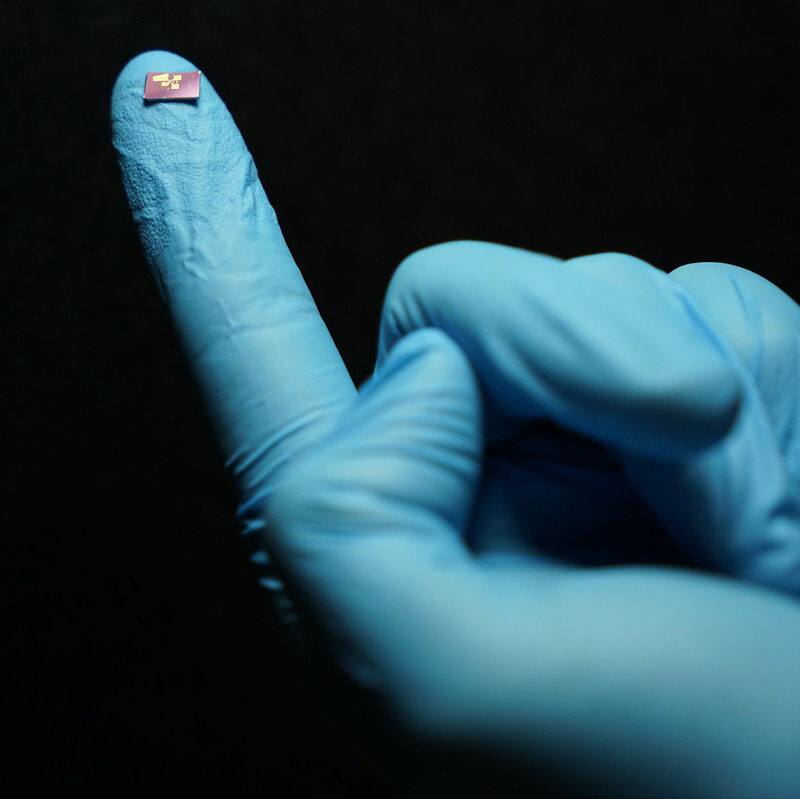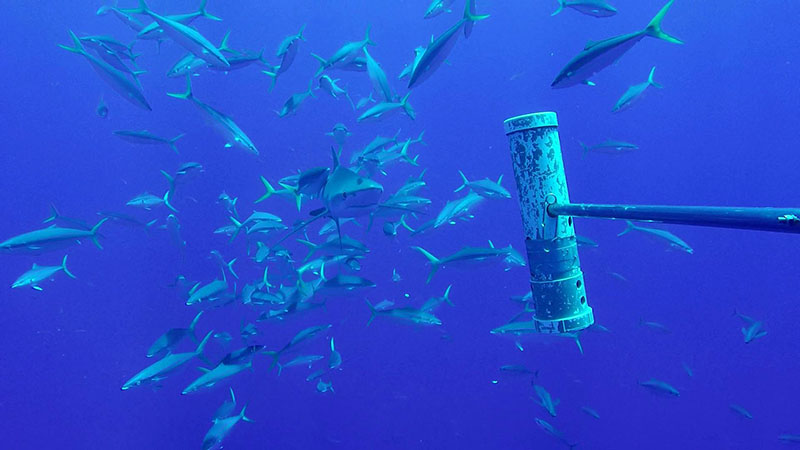The week’s most astounding developments from the neobiological frontier.
- February 1, 2024
- January 25, 2024
- January 11, 2024
- December 21, 2023
- December 14, 2023
- December 7, 2023
- November 30, 2023
- November 16, 2023
- November 9, 2023
- November 2, 2023
- October 26, 2023
- October 19, 2023
- October 12, 2023
- October 5, 2023
- September 28, 2023
- September 21, 2023
- September 14, 2023
- August 31, 2023
- August 24, 2023
- August 17, 2023
- August 10, 2023
- August 3, 2023
- July 27, 2023
- July 13, 2023
- June 22, 2023
- June 15, 2023
- June 8, 2023
- June 1, 2023
- May 25, 2023
- May 18, 2023
- May 11, 2023
- May 4, 2023
- April 27, 2023
- April 20, 2023
- April 13, 2023
- April 6, 2023
- March 16, 2023
- March 2, 2023
- February 23, 2023
- February 16, 2023
- February 9, 2023
- February 2, 2023
- January 26, 2023
- January 19, 2023
- January 12, 2023
- December 15, 2022
- December 8, 2022
- December 1, 2022
- November 17, 2022
- November 10, 2022
- November 3, 2022
- October 27, 2022
- October 13, 2022
- October 6, 2022
- September 29, 2022
- September 22, 2022
- September 15, 2022
- August 25, 2022
- August 18, 2022
- August 11, 2022
- August 4, 2022
- July 28, 2022
- July 21, 2022
- July 14, 2022
- June 30, 2022
- June 23, 2022
- June 16, 2022
- June 9, 2022
- June 2, 2022
- May 26, 2022
- May 19, 2022
- May 12, 2022
- May 5, 2022
- April 28, 2022
- April 21, 2022
- April 14, 2022
- April 7, 2022
- March 31, 2022
- March 24, 2022
- March 17, 2022
- March 10, 2022
- March 3, 2022
- February 24, 2022
- February 17, 2022
- February 10, 2022
- February 3, 2022
- January 28, 2022
- January 20, 2022
- January 13, 2022
- January 6, 2022
- December 16, 2021
- December 9, 2021
- December 2, 2021
- November 18, 2021
- November 11, 2021
- November 4, 2021
- October 28, 2021
- October 21, 2021
- October 14, 2021
- October 7, 2021
- September 30, 2021
- September 23, 2021
- September 16, 2021
- September 9, 2021
- September 2, 2021
- August 12, 2021
- August 5, 2021
- July 29, 2021
- July 22, 2021
- July 15, 2021
- July 8, 2021
- July 1, 2021
- June 24, 2021
- June 17, 2021
- June 10, 2021
- June 3, 2021
- May 27, 2021
- May 20, 2021
Exercise and longevity after age 65
Your workout routine in your 20s may still be working for you at age 40, but by the time you reach your mid-60s, you might want to consider rethinking your training habits—but that doesn’t mean you should stop. A new study published this week demonstrates that longevity benefits after age 65 can be obtained by moderate to vigorous aerobic activity combined with strength training. (Federal physical activity guidelines also recommend balance training.) Researchers at the U.S. Centers for Disease Control and Prevention compared physical activity to deaths among 115,489 people who self-reported their exercise in federal health survey interviews from 1998–2018. The study found that 10–300 minutes of moderate to vigorous aerobic activity per week and 2–6 strength training sessions per week were both associated with lower all-cause mortality. The maximum benefit, including for people 85 and over, came from doing both. Never stop! JAMA Network Open
Black Death, human evolution, and autoimmune disease susceptibility
Untimely death is an ultimate driver of evolutionary selection, and scientists have long speculated that massive disease outbreaks of the past may have shaped human genetics. Perhaps no outbreak looms as menacingly in the human psyche as the Black Death, a runaway plague of Yersinia pestis in the mid-14th century that killed up to half the population of Europe. It forever altered culture and economics, and now there’s solid evidence it shaped the human immune system as well. A new study from McMaster University and the University of Chicago looked at 206 DNA samples extracted from the remains of people who died before, during, and after plague hit London and Denmark. They found evidence of selection for 245 DNA variants during the plague, including some associated with genes that appear to enhance the cytokine immune response to the bacterium. On the flip side, those same protective variants also overlap with genetic susceptibility to autoimmune diseases today. Nature

Researchers extracted DNA from the remains of people buried in the East Smithfield plague pits, which were used for mass burials from 1348–1349. Museum of London Archaeology
3D models of tumors will transform treatment
Cancer treatment is something of a poster child for precision medicine. The heterogeneity of human tumors has long demanded personalized surgery and radiation therapy plans, which are worked out by treatment teams in advance of treatment. In the modern era, uncovering specific genetic drivers of disease has led to the development of checkpoint inhibitors and other targeted therapies like Gleevec and Herceptin. But precision medicine isn’t always molecular. Five years ago, supercomputing pioneer Larry Smarr created a 3D model of his own colon prior to undergoing surgery to address his inflammatory bowel disorder. That same virtual approach is going to revolutionize cancer treatment, according to researchers at the National Cancer Institute in Rockville, Maryland, the Jackson Laboratory for Genomic Medicine in Farmington, Connecticut, and the Terasaki Institute for Biomedical Innovation in Los Angeles. In a perspective this week, they describe how 3D patient tumor avatars (3D-PTAs) will accelerate and improve cancer treatment. Cancer Cell
The neurobiology of comfort food
A fine chef a proto.life editor Jason Bardi once knew used to refer to a Turkish saying that good taste is learned. This is backed up, at least partly, by neuroscience. Studies showing that bad tastes are indeed learned—exposure to toxins in food drives associative learning in the brain, which causes animals to avoid similar tasting foods in the future. Now researchers at the University of Tennessee have shown that familiar, inconsequential, and otherwise good tastes change the brain as well. Imaging the brains of mice allowed to freely sip different tasting liquids, they observed the activity of taste-responsive neurons in the gustatory cortex greatly decreased as the animals became familiar with tastes. Could this brain-calming sensory habituation explain why comfort food is so tasty—because you don’t have to think about it? Current Biology
Ultra-compact spectrometer fits on a human hair
Spectrometers are one of the most common types of analytical tools used in chemistry and biology. Typically benchtop instruments, they blast samples with specific wavelengths of light and see how the samples absorb the light to measure things like the concentration of specific molecules in the samples. Now researchers at Aalto University in Espoo, Finland, have designed a spectrometer so small it could fit on the end of a human hair. It has a footprint of about one-sixth by one-hundredth of a millimeter and works in the spectrum of visible light, something that has never before been accomplished on such a small scale. Science

An image of the new human hair-sized spectrometer embedded on a chip small enough to fit on a finger. Oregon State University
You shark my back, I’ll shark yours
We do so love the resourcefulness of animals in the wild. A study this week from the University of Western Australia shows that when large, open-sea fish are infected with parasites, one strategy they use to self-treat their affliction is to scrape their backs on the skin of sharks to slough off the parasites. Smaller fish however—ones the researchers characterize as “bite-sized”—avoid this behavior. And for obvious reasons! Never let it be said that fish are stupid. The researchers point out that declines in shark populations in the world’s open seas could have much larger reverberations on other ocean wildlife like rainbow runner and yellowfin tuna by limiting their interaction with sharks and preventing them from scraping off parasites. PLOS ONE

A rainbow runner scraping on a blue shark at Ascension Island. Christopher D. H. Thompson, CC-BY 4.0